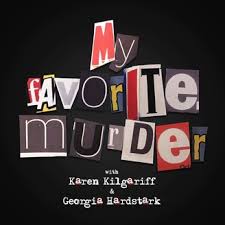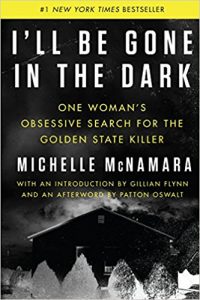 By Colorado Review Associate Editor Lauren Matheny
By Colorado Review Associate Editor Lauren Matheny
I am not a serial killer. But anyone reading my Google search history, or scrolling through the podcasts I listen to, might have some concerns.
True crime has always been a popular genre—just look at the number of prime time shows devoted to Unsolved Mysteries, the first 48 Hours of a disappearance, and seemingly monthly specials devoted to famous murders or disappearances. But thanks to a recent rise in the standard, and possibly entertainment value of investigative journalism, true crime has seen something of a rebirth in the popular media: a genre that you don’t need to read in dark corners or under your covers with a flashlight, scared someone will think of you as a freak, or, worse, a sociopath.
A recent Huffington Post article linked this resurgence in popularity to series like Serial, a podcast whose first season details the conviction of Adnan Syed. The article lists many popular true crime shows and podcasts—Making a Murderer, Someone Knows Something, The Keepers, The Jynx—all of which I’ve at least listened to or watched for a few minutes, all of which detail heinous crimes, deviant behavior, and devastated families. The article quotes an assistant professor of human services and psychology, who states that we’re drawn to these stories because we get a glimpse into depraved human psyches—we can be armchair psychoanalysts and ponder how the murderer’s brain works, without having to be a victim or participate ourselves.

I think being a writer myself, and a female-identifying writer at that, adds an entirely new dimension to my obsession with true crime. I spend my “writer time” putting myself into the mindsets of other humans, humans that I’ve dredged up from my imagination and crafted, humans with their own charms and foibles and unique psychological quirks (no serial killers, yet, but certainly some characters that a therapist would love to get a hold of for a chat). I spend the rest of my time reminding myself of how I’m moving through space, of the ways in which I might be vulnerable. If I walk to my car in the dark, I keep a key shoved between my knuckles. As soon as I enter the car, I check the back seat for intruders while simultaneously locking the doors. When I get home, I lock the door quickly behind me. I look out the peephole before answering a knock. I am always on high alert, 24/7—and the funniest thing (or the worst thing, maybe) is I have always been like this, long before my interest in true crime books and podcasts.
I’ve been pondering my favorite entries into this genre, and what they have to do with my writing, or how they make me a better writer, or a better person . . . or if they only cause me to stay up light at night, checking and rechecking that my windows are locked.
Every week I listen to My Favorite Murder, a podcast hosted by two female friends and comedians because I love how they take their air time to respect the victims of atrocities, along with focusing on the evil perpetrated upon them—they call women (so often, they’re young women; even more often, young women of color) by their names, instead of by their coding of “Victim 72” or “Jane Doe 21.” It reminds me of Mel Brooks’s take on Hitler in The Producers; when accused of his film being tasteless, Brooks said, “Of course [it is]. But it’s also funny, isn’t it? . . . You can laugh at Hitler because you can cut him down to normal size. Of course, it’s impossible to take revenge for 6 million Jews. But by using the medium of comedy, we can try to rob Hitler of his posthumous power and myth.”
This is what I feel My Favorite Murder and other true crime products by women in the past five years attempt to do: they cut the psychopaths, the murderers and rapists and abusers, down to size. It’s not to take revenge—but it does rob these men of their power to amaze, to baffle, to be seen as some sort of living legend.
Michelle McNamara’s recent book, I’ll Be Gone in the Dark, which was published posthumously, affected me more than any other true crime novel I’ve read, probably because her absolute disgust at the perpetrator, her wish to turn him from a mysterious enigma into what he truly is, an evil man doing evil deeds, feels universally empathetic. Michelle is all of us when we listen to these stories: horrified, overwhelmed at the heroism of some and the evil of others. Wishing to shine light on the dark places of what humans can do. Looking for pinpoints of brightness in the muck of what man is capable of working on his neighbor.

I finished Michelle’s book, and I immediately sat back down to a story I was writing, a story with nothing whatsoever to do with true crime, murderers, or victims. But I felt lit on fire by what Michelle had done—she crafted a mysterious man in the dark into a living, flesh-and-blood man who’ll one day be caught. She gave voice to the voiceless victims. She even wrote herself into the book, driven into a frenzy by her project, by the understanding of what it means to dig so deeply into something that you become fused with it.
And she did this all with a blank page and a blinking cursor and an author’s mind. She shone light into the darkness using only words and her magnificent brain.
And at the end of the day, isn’t that all we writers can hope to do?